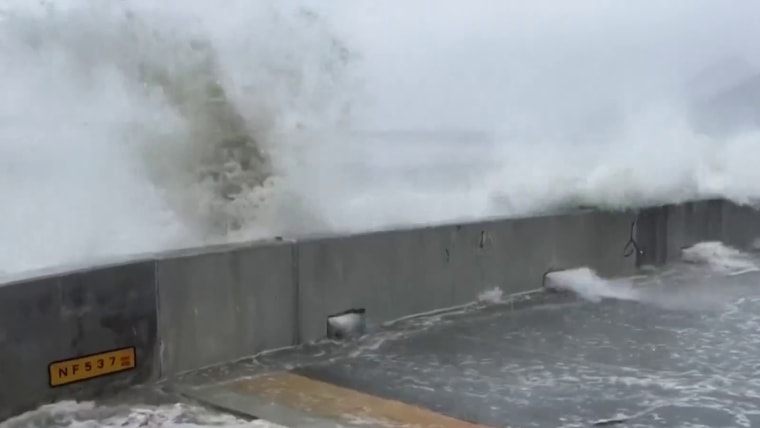HONG KONG — Streets in southern China were deserted Wednesday as Typhoon Ragasa, one of the world’s strongest storms this year, slammed into the region after having carved a deadly path between the Philippines and Taiwan.
At least 17 people were confirmed dead in Taiwan, the National Fire Agency said Wednesday — all in eastern Hualien County, where floodwater from a barrier lake surged into Guangfu township.

At least three deaths were reported Tuesday in the Philippines, where the storm also displaced thousands of people in the north of the country.
China’s National Meteorological Center said Wednesday afternoon that Ragasa had weakened from a super typhoon to a strong typhoon but that it was still packing winds of up to 112 mph. The storm made landfall in China’s Guangdong province around 5 p.m. local time (5 a.m. ET), after which it was expected to move into the Gulf of Tonkin between South China and Vietnam.
Authorities warned of heavy rain and strong wind across southern China.
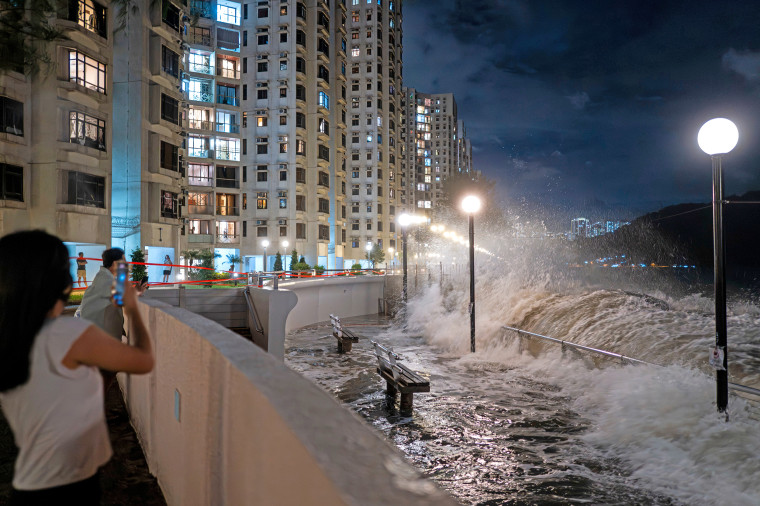
The storm earlier passed near the Chinese territories of Hong Kong and Macau, where fierce winds woke residents during the night, schools and flights were canceled and many businesses were closed.
Residents had been stockpiling food and other supplies, while businesses taped their windows and lined sandbags along entryways.
Callan Williamson, 36, who moved to Hong Kong five years ago and works as a brand manager at a consulting firm, said Ragasa was the first major typhoon he had experienced.
“I have had water coming through the kitchen window,” he said.
The Hong Kong Observatory issued storm warning signal No. 10, the highest in its weather alert system, at 2:40 a.m. local time (2:40 p.m. ET Tuesday), an hour after it issued its second-highest warning signal, No. 9. At 1:20 p.m. local time (1:20 a.m. ET), the signal was lowered to No. 8, the third-highest.
Maximum sustained winds as high as 120 mph were recorded on the island of Lantau, home to Hong Kong International Airport.
Macau, a major gambling hub, also issued a No. 10 warning signal early Wednesday, and casinos were closed.
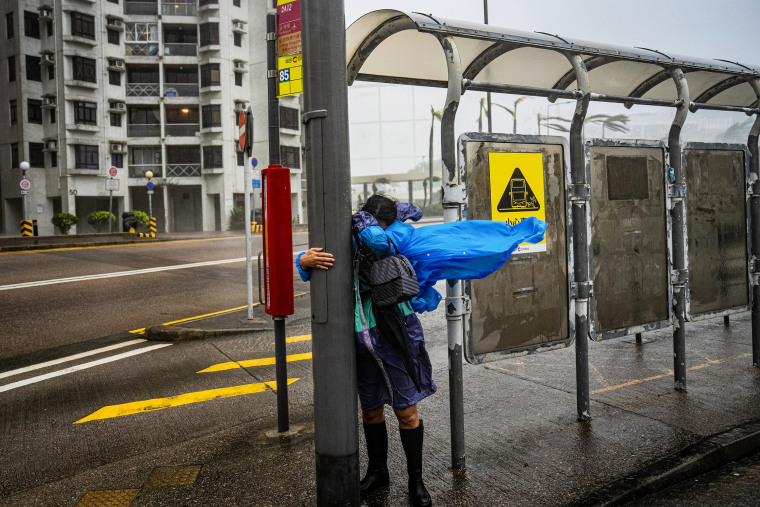
Ragasa, which means “scramble” in Tagalog, brought heavy showers and major storm surge to Hong Kong, and members of the public were advised to stay indoors and away from the shoreline and low-lying areas. The observatory said the storm surge caused a general rise of almost 5 feet in water levels across the city.
By late morning, the storm was leaving Hong Kong, a densely populated international financial hub of 7.5 million people, though hurricane-force winds persisted.
The Hong Kong stock exchange was open after it changed its policy last year to continue trading regardless of weather.
Hong Kong government officials said almost 900 people had sought refuge at dozens of temporary shelters. As of 5 p.m. local time (5 a.m. ET), there were 90 reported injuries, 896 reports of fallen trees, four reported landslides and 19 reports of flooding.
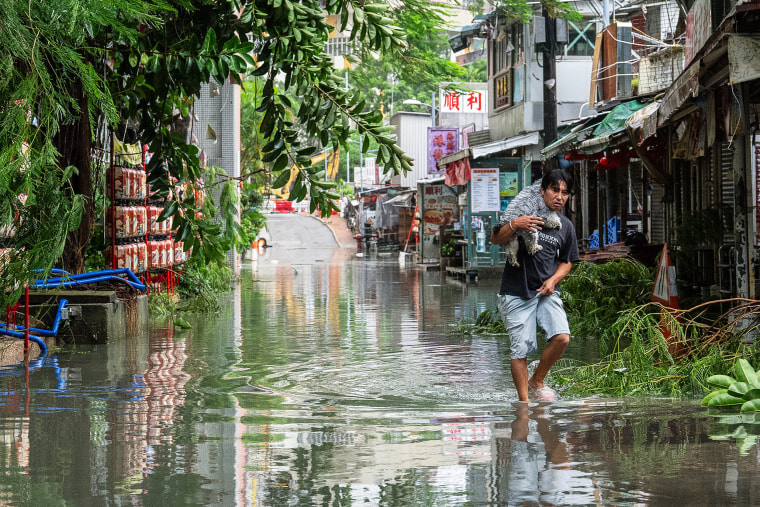
Huge waves crashed through the glass doors of the oceanfront Fullerton Hotel on the south side of Hong Kong Island, flooding the ground-floor lobby and sweeping people off their feet, according to videos posted on social media that were verified by NBC News. Calls to the hotel were not answered Wednesday.
Elsewhere, CCTV video showed a succession of waves bursting through the doors of a restaurant in the Tseung Kwan O neighborhood in the New Territories, sending furniture afloat.
On Tuesday, mainland Chinese officials elevated the typhoon emergency response to Level III in Guangdong, the country’s most populous province, at more than 125 million people, as well as in the island province of Hainan. More than 1 million people had been evacuated from Guangdong as of Tuesday afternoon, Chinese state media reported.
More than 10 cities in Guangdong have suspended classes, business operations and public transport, including high-speed trains, and flights have been canceled at major regional airports, including in the cities of Guangzhou and Shenzhen.
Residents in Guangzhou and other cities parked their cars on bridges to avoid potential flooding in underground garages and on surface streets.
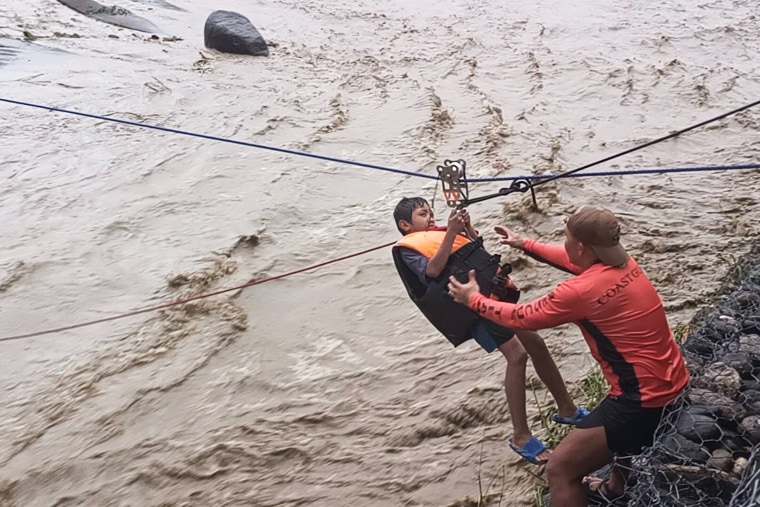
Officials had said Ragasa could be even more destructive than Typhoon Hato in 2017 and Typhoon Mangkhut in 2018, which caused hundreds of millions of dollars in direct economic losses to the region.
Hong Kong has experienced unusually severe rainl this year, including four black rainstorms — the city’s highest tier of heavy rain — within eight days from late July to early August. On Aug. 5, the Hong Kong Observatory recorded more than 14.5 inches of rain, the highest daily rainfall in August since records began in 1884.
